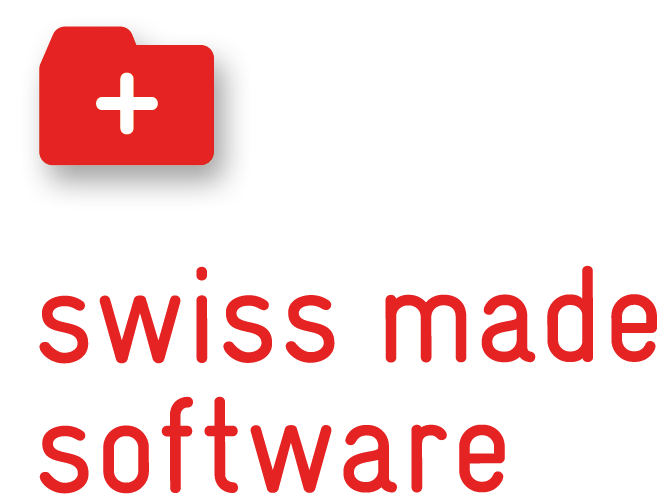In our last piece, we looked at just a slice of the expansive alternative lending ecosystem. The explosion in the space is mainly due to a few core factors:
Greater demand for micro-loans and similar consumer products that fall short of standard bank lending and increased credit risk within some consumer sectors.
Enterprise-sized demands for cash flow, particularly in real estate, in circumstances where private equity makes little sense and traditional credit isn’t practical.
An overall high-rate, high-yield macroeconomic environment makes legacy lending pricier for the little guy. At the same time, high rates mean investors clamor for yield beyond traditional fixed-income products.
Since the alternative lending landscape is so broad, with as many investors and platforms available as there is demand for various loans, due diligence is especially critical for investors dipping their toes in the private credit market.

Why do due diligence?
Due diligence is fundamental when considering any new investment or capital venture. But the sheer scope of alternative lending, emerging regulatory parameters, and the often-obscure parameters and processes of platforms mean that every facet of the deal needs to be scrutinized.
Scope aside, private lending demands extra due diligence because of aspects inherent to the asset.
Credit risk
Private credit borrowers, by definition, can’t get traditional loans at preferred terms. Whether due to actual credit risk or some other parameter, as we saw in real estate and agricultural loans, banking institutions saw the borrower as unsatisfactory in most circumstances – meaning lenders assume a greater risk from the outset.
Looser limits
Related, but slightly separate from the above, is that aspects of due diligence usually offloaded to institutional banking in legacy lending fall on the platform and, by extension, the investor.
Consider traditional mortgage lending.
Mortgage applicants, particularly in high-rate environments like today, submit to a barrage of inspections and parameters designed to protect the lender’s investment. These include:
- Credit score and net assets
- Purpose of property purchase (rent, primary residence, investment)
- Condition of the home and a series of inspections to assess the upper limit/fair value of the mortgage
- Many, many more
With these parameters in place, property buyers interested in non-standard buys might struggle to source standard mortgages. For example, if a flipper wants to jump on foreclosure but lacks the cash to buy the home at auction, a bank won’t likely lend them the cash or mortgage the property based on intent and property condition. In these cases, alternative lending steps up, especially when acting as a short-term bridge loan.
The speed and efficiency of the loan demand less rigorous requirements, though – there isn’t time, nor intent, to dive too deeply into the borrower’s background in most cases. Due diligence is therefore critical to see what parameters the lender does demand to ensure an alternative lending investment isn’t funding some crackpot with no credit history.
Partner due diligence
A solid alternative lending investment starts with an equally solid partner. As an act of preventative maintenance, due diligence to assess your potential GP’s bona fides tells you much about their history, goals, values, and investment ethos.
Track record
The first question to ask prospective GPs is, “how successful are you?”
Alternative lending is risky, and nothing is guaranteed nor a foolproof investment. Still, quality partners execute quality deals and shouldn’t have a problem answering basic questions about their investment history and track record, including:
- Have any of the current or past borrowers gone bankrupt?
- Have borrowers ever been unable to service debt or make planned payments? What is the partners’ plan in the event of repayment problems?
- Have third-party auditors issued qualified opinions within any financial reports for the partners’ portfolio companies?
These are a few essential questions to ask, but so basic that a partner’s pitch should include the series from the beginning – not presuming they are hiding anything if they do omit their track record, but a successful partner has no reason not to boast.

Legal limitation
Like a partner’s track record, their legal past and current structure are basic questions with binary outcomes: satisfactory or unsatisfactory. Any past misdeed like criminal investigation or (worse yet) proceedings and conviction must be disclosed, and it’s safe to say that a partner unwilling to do so is hiding something.
Furthermore, due diligence ensures the firm actively maintains compliance with the country or specific investment’s regulatory parameters and gets inspected routinely to validate that compliance. Credit and loss of principal risk are all too real in alternative lending – don’t stake your capital on criminal risk, too.
Loan portfolio
A partner’s loan portfolio should align with your risk tolerance and personal investment strategy. Although many loan types exist in the industry, many partners often maintain a narrow focus on an area of specialty, like real estate lending, or focus on MSME loans.
The portfolio’s focus dictates risk and investment goal (i.e., capital appreciation vs. income), and preferred partners diversify a portfolio while maintaining a key overall thesis. Partners with a grab bag of loan types in a portfolio likely don’t fully understand the mechanics and risks of each – in this case, it’s best to specialize when building lending portfolios.
Technical standards
Technical standards and infrastructure aren’t usually key to investment due diligence but can be for private lending partners working in emerging market spaces or offering similar loan packages.
Loan management and regulatory compliance come with a hefty technological bill, so partners often have a suite of data lakes and hardware to manage investments. But, when lending to emerging markets, the backend support on the borrower’s end isn’t always there. Ensure that you understand existing technical support, demand, and pitfalls - and the partner’s mitigation strategies for any gaps.
Platform due diligence
As a manager, a trusted GP does much of the legwork in due diligence for the investment. Still, it’s best to understand the underpinnings of the platform you’re investing in, particularly if the platform originates or underwrites the loan itself.
Vintage analysis
Vintage analysis looks at the loan, or loan portfolio, through snapshots from when the lender issued it (usually grouped by year). Lenders maintain loan tape, effectively the data room through which all loan stats aggregate, and the loan tape is usually the sole source in vintage analysis.
When considering portfolio vintage performance, dig through the loan tape to find:
- Default level: how many borrowers defaulted on their debt, and how quickly? Do defaults level off after a certain period historically? For example, real estate lending might see a rash of defaults within the first 18 months of the loan’s life as construction fails or projects dissolve but taper off afterward as only viable endeavors remain. Analyzing default levels can help investors forecast capital loss risks.
- Recovery level: how many loans are written off as bad debt, and how many return to serviceability?
- Exposure level: when defaults happen, how much do they impact the fund? Is the portfolio sufficiently diversified to offset default risk according to historical averages?
And again, none of these are taken in a vacuum or as a one-time metric: instead, they’re considered throughout multiple time horizons to help:
- Determine whether origination in particular parts of a year is riskier than in others.
- To find the peak performance to determine when selling the debt on secondary markets is ideal.
- Track overall risk and performance.
Cash flow and financing
Platforms come with operational expenses of their own beyond loan servicing. Smaller platforms often operate hand-to-mouth and rely on consistent interest payments and principal repayment to fund their day-to-day life.
While this method is viable for some, understanding a platform’s underlying cash flow helps run a “mini stress test” during due diligence – how reliant is the platform on timely monthly repayments, and how well can it absorb borrowers missing those payments?
Financials and fundamentals
Simple ratios and financial metrics reveal much about any investment's underlying health. Therefore, running those financial figures during due diligence helps understand the platform’s long-term viability or whether it’s at risk itself. Often liquidity and cash flow ratios are best when assessing private lending platforms:
- Debt-to-equity: how much debt does the platform hold itself (owe creditors) compared to total assets? Leverage is often necessary, but becoming overburdened means all assets go to the platform’s creditors in the event of collapse rather than returned to investors.
- Tangible equity: how much physical capital and assets does the platform have? Financial services platforms often hold hefty intangible assets on their balance sheet, and lending platforms are no different. Understanding tangible equity helps investors envision how heavy a loss the platform can sustain before the complete loss of shareholder equity.
- Debt-to-EBITDA: calculating debt to EBITDA demonstrates a company’s current operational health as it relates to total debt and indicates how long it must continue at its current pace to repay all debts.
- Coverage ratio: how well can the company service its debt and meet similar obligations? The higher the coverage ratios, the wider its margins and the less risky the financials.
- Liquidity: liquidity is king in private and alternative lending, and cash-focused ratios help understand whether the platform can absorb losses or is truly hand-to-mouth, sandwiched between its debt service and reliant upon borrower repayment schedules.

Audit and compliance
Ensuring compliance with International Financial Reporting Standards (IFRS) and a good audit history is essential to the due diligence process.
IFRS is a globally recognized set of accounting standards used to publish financials. Compliance with IFRS ensures that companies present financial information in a consistent, transparent, and accessible manner.
Compliance makes it easier for investors to compare financial statements across companies and countries. IFRS compliance is essential for companies operating in the international marketplace – of which alternative lenders are a substantial stakeholder.
Compliance isn't sufficient on its own; the platform should also subject itself to rigorous third-party audits to ensure compliance before there's a problem. Conducting a comprehensive investigation of the investment's financial statements, internal controls, audit reports, and background checks on management and legal issues gives investors confidence in the platform's health and transparency, reducing the risk of unforeseen financial issues and potential losses.
Additional considerations
Several other due diligence demands depend upon the platform and loan types. Two critical factors are the size and track record of the investment, as well as its compliance with know-your-customer (KYC) and anti-money laundering (AML) regulations.
Size and track record are critical indicators of the investment's financial health and success. Factors like the years in operation, employee count, revenues, asset size, issuances, and outstanding portfolio provide insights into the investment's experience and stability.
An investment with a strong track record is more likely to have established effective risk management strategies, efficient operational processes, and sound financial management practices. Additionally, a larger investment may have more resources and a wider network of partners, which can translate into better access to capital, improved investor confidence, and better investment stability.
KYC and AML compliance is also crucial in the alternative lending industry. With the rise of digital lending platforms, it's easier for bad actors to use them to launder money or engage in other illicit activities.
Therefore, investments that adhere to KYC and AML regulations are more likely to have effective safeguards to prevent such activities. These regulations require the investment to perform due diligence on their borrowers, including verifying their identities, assessing their creditworthiness, and conducting background checks to ensure they are not on any sanctions or watch lists. Complying with these regulations can help reduce the risk of fraud, protect investors, and improve market integrity.
Conclusion
As the alternative lending industry grows, we see a regulatory increase and a positive development for institutional and professional lenders.
For example, the European Crowdfunding Service Providers (ECSP) regulation, which occurred in November 2021, aims to standardize and regulate crowdfunding platforms across the European Union.
Alternative lending's broad scope, emerging regulatory parameters, and platforms' often-obscure parameters and processes mean that every facet of the deal is under the microscope. However, lenders still have vastly different systems, with different technological and reporting standards. As such, due diligence remains crucial when investing in alternative lending opportunities. It helps investors navigate this complex and rapidly evolving industry and make informed decisions that reduce risks and increase the likelihood of a positive return on investment.


